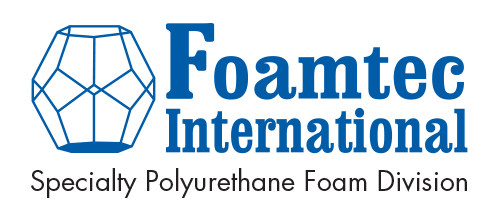
Horizontal Slicing
At Foamtec International, we utilize horizontal slicing technology to meet the precise needs of our diverse clientele across all industries.
The horizontal slicing process is integral to our operations, enabling us to efficiently convert large blocks or buns of foam into thinner sheets or specific shapes tailored to the exact specifications of our customers. This precision is critical for applications such as cleanroom swabs, gaskets, and filters, where exact dimensions and reliability are crucial.
By incorporating automated features into our horizontal slicing equipment, we enhance both precision and efficiency while minimizing waste. This not only helps us uphold our high standards of production but also supports our dedication to sustainability and cost-effectiveness.
Defining Horizontal Foam Slicing
At its most fundamental level, horizontal foam slicing refers to the process of cutting foam blocks into thin, even layers along the horizontal axis. This process can be contrasted with vertical foam slicing, which involves slicing foam vertically to produce longer, potentially narrower strips.
The goal is to create uniform, precise foam slices that can be utilized in various products, from mattresses and upholstered furniture to soundproofing panels and packaging materials. The primary virtue of horizontal slicing is that it allows for the efficient production of wide, thin foam sheets, which are crucial in many applications.
Techniques and Tools for Horizontal Foam Slicing
The traditional method of foam slicing, whether horizontal or vertical, involves the use of large industrial machines with razor-sharp, tensioned steel blades. Some machines employ a band knife - a long, continuous blade that loops around wheels. The foam block is fed into the machine and pushed against the moving blade to produce clean, precise slices.
In recent years, technological advancements have introduced more sophisticated tools into the mix, such as CNC (computer numerical control) foam cutting machines. These use computer-guided blades and hot-wire cutting elements to achieve incredible precision. Hot-wire foam cutting is a popular choice for producing complex shapes or designs, offering a clean cut that doesn't leave dust or debris.
Applications of Horizontal Foam Slicing
The primary arena for horizontal foam slicing is in the production of foam-based products. One of the most familiar examples is in the mattress and furniture industry, where foam is a key material for creating comfort layers. Horizontal slicing enables manufacturers to produce wide, thin layers perfect for these applications.
In the automotive and aerospace industries, thin foam layers are used for seat cushions, soundproofing, and thermal insulation. Similarly, horizontal foam slicing is essential in the packaging industry, where protective foam inserts safeguard sensitive goods during transit.
Beyond these, there are countless specialty applications for horizontally sliced foam. The electronics industry uses it for static-sensitive packaging, while medical fields utilize it in making orthopedic supports and prosthetics.

